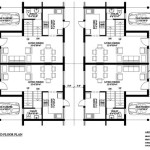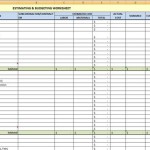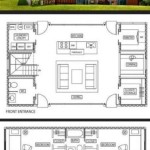How to Draw Floor Plans to Scale
Creating accurate floor plans is essential for architects, designers, and homeowners alike. They provide a clear representation of a building's layout, dimensions, and spatial relationships.
Drawing floor plans to scale involves using a specific ratio to represent the actual dimensions of the space. This ensures that the plan is not only visually accurate but also functional for planning and construction purposes.
Here are the essential aspects of drawing floor plans to scale:
1. Choose a Scale
The first step is to select an appropriate scale for your floor plan. The scale should be large enough to clearly show all the details of the space while also being manageable to work with.
Common scales used for floor plans include:
- 1:50 (1 inch represents 50 actual feet)
- 1:100 (1 inch represents 100 actual feet)
- 1:200 (1 inch represents 200 actual feet)
2. Measure the Actual Space
Once you have selected a scale, accurately measure the actual dimensions of the space you are drawing. Use a measuring tape or laser measure to determine the length, width, and height of each room or area.
Note down these measurements and make sure they are correct before proceeding.
3. Determine the Drawing Size
Based on the scale you chose and the measurements you took, determine the appropriate size for your floor plan drawing. Multiply the actual dimensions by the scale factor to get the drawing dimensions.
For example, if a room is 20 feet long by 15 feet wide and you are using a scale of 1:100, the drawing dimensions would be 20 inches long by 15 inches wide.
4. Draw the Exterior Walls
Start by drawing the exterior walls of the building. Use a straight edge and a pencil to create lines that represent the perimeter of the space. Make sure to label the walls with their corresponding dimensions.
Check the dimensions against your measurements to ensure accuracy.
5. Add Interior Walls and Features
Once the exterior walls are drawn, add the interior walls, doors, windows, and other features. Use a different line weight or color to differentiate between different types of elements.
Label all the features clearly and make sure their dimensions are consistent with the scale.
6. Include Dimensions and Annotations
Clearly mark the dimensions of all the rooms, walls, and openings. Use appropriate symbols and line styles to indicate various features such as plumbing fixtures, electrical outlets, and appliances.
Add any necessary annotations or notes to provide additional information about the space.
7. Review and Refine
Finally, carefully review your floor plan for any errors or omissions. Check the dimensions, confirm the accuracy of the features, and make any necessary revisions.
A well-drawn floor plan should be clear, accurate, and easy to understand.
Conclusion
Drawing floor plans to scale is a valuable skill for anyone involved in the design or construction industry. By following these essential aspects, you can create accurate and functional floor plans that effectively communicate the layout and dimensions of a space.
How To Draw A Floor Plan Scale Quora

Learn How To Read A Floor Plan

How To Draw A Floor Plan Scale Measuring Sketching

How To Measure Distances In Technical Drawings With Custom Scale Annotator

How To Draw A Floor Plan Scale Measuring Sketching

Understanding Scales And Scale Drawings A Guide

Bina Office Furniture How To Draw A Floor Plan Scale

How To Measure A Floor Plan

How To Draw A Building Plan Scale In 4 Simple Steps Harpr Surveyors
How To Draw A Floor Plan Scale Quora
Related Posts








